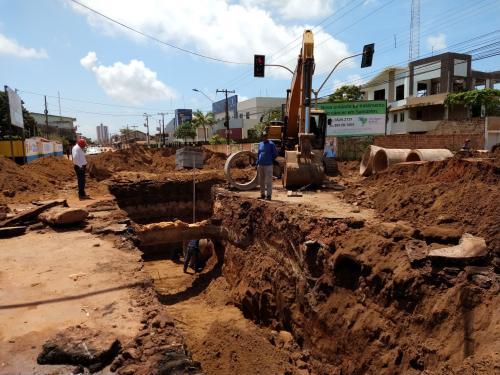This post was updated on December 15, 2022.
Can diaspora bonds—bonds funded by Africans living in the diaspora, primarily in middle-income and high-income countries—help drive new investments in the continent?
The African diaspora in the United States
There is no question that the African diaspora in the United States has reached a new level of influence. In fact, last year, Dana Banks, senior director for Africa at the National Security Council, stated at a press briefing focused on U.S.-Africa trade that the Biden administration will provide targeted support to small- and medium-sized businesses “with a specific focus on the African diaspora and their businesses and investors across the United States.”
The Biden administration’s attention to the African diaspora is recognition that the Black immigrant population in the United States has increased fivefold since 1980, with much of this growth fueled by increasing migration from sub-Saharan Africa. Today, approximately 2 million sub-Saharan Africans live in the United States, an increase of 52 percent since 2010. (Note: These figures do not account for the U.S.-born children of these African immigrants.) As might be expected, the largest share of African emigrants to the United States come from the most populous countries, including Ethiopia, Nigeria, and Kenya. More than half of African immigrants became naturalized U.S. citizens by 2017; others who have acquired legal lawful residence (i.e., a green card) did so by arriving as immediate relatives of U.S. citizens, obtaining refugee status, or winning the Diversity Visa lottery.
Furthermore, the African diaspora community in the United States has specific traits that have helped to broaden its influence economically and politically. The Migration Policy Institute notes that, “compared to the total foreign-born population in the United States, sub-Saharan Africans are better educated, tend to participate in the labor force at higher rates, and are more likely to speak English at home.” As of 2017, 40 percent of sub-Saharan Africans aged 25 and over held a bachelor’s degree or higher, compared to 31 percent of the total foreign-born population and 32 percent of the U.S.-born population. Sub-Saharan Africans also participate in the civilian labor force at high rates, mainly in the fields of management, business, science, and the arts.
The African diaspora’s financial clout
Sub-Saharan African immigrants living in the U.S., Europe, and elsewhere send back significant amounts in remittances to the continent. In 2021, that amount was $45 billion—an increase of 6.2 percent over 2020, when remittances were impacted by the COVID-19 pandemic. Overall, however, remittances to low- and middle-income countries remained surprisingly resilient over the last two years.
The total amount of foreign direct investment in the region in 2021 was $88 billion. The volume of FDI was inflated by a single intra-firm financial transaction in South Africa in the second half of 2021. The FDI volumes into Africa for 2019 and 2020, respectively, were $32 billion and $29 billion—or less than diaspora remittances.
With the improvement of financial technology, a more conducive regulatory environment, and an increase in African migration over the past decade, remittances have become one of the leading sources of foreign exchange revenue, according to the World Bank. In addition, while the volume of remittances is small, it is significant—contributing to about 2 to 3 percent of sub-Saharan Africa’s GDP.
The potential for diaspora bonds
While, traditionally, diaspora remittances support the immediate needs of family members, related tools like diaspora bonds can facilitate far-reaching positive impacts for local and national communities. According to an article published by the Migration Policy Institute, “a diaspora bond is a government debt security with investors drawn from the country’s nationals living abroad, their descendants, or those with another connection to the nation.” Diaspora bonds could allow governments and potential project sponsors or corporates to diversify their funding sources while borrowing at below-market rates and longer tenors, as these bonds are offered at a “patriotic discount” or during times of fiscal crisis. Diaspora bonds can also raise money for larger projects, such as infrastructure and social safety net programs, while satisfying the desire of diaspora communities to contribute to improving their countries of origin.
Given Africa’s economic development needs, such as building roads, strengthening telecommunications networks, and improving access to electricity, diaspora bonds can help to kick-start long-term and costly projects.
African governments look increasingly to their diaspora—but can bonds work?
African governments have increasingly taken steps to attract investment, tourism, skills, and networks from their citizens and the broader African diaspora (including descendants of enslaved persons in North and South America). For example, Ghana updated its policy on dual citizenship in 2000 and now allows Ghanaians to maintain their citizenship while also acquiring secondary citizenships. Ghana also hosted the successful Year of Return in 2019 to attract Ghanaian immigrants (and the broader Black diaspora) to visit the country, including some from the diaspora community who were granted citizenship.
Ethiopia has a long-established special residency permit for members of the Ethiopian diaspora with foreign citizenship to live, invest, and work in the country of origin. Recently, banking regulations have been liberalized to permit the Ethiopian diaspora with foreign citizenship to invest and buy shares in private commercial banks, set up lending businesses in the state-dominated financial sector, and contribute to major infrastructure projects. In fact, the country issued a diaspora bond in 2008 to finance projects for Ethiopian Electric Power, a state-owned entity, and again in 2011 to finance the GERD. However, both attempts failed to achieve expected results due to real and perceived risks. In particular, investors lacked trust in the government: According to the Anti-Corruption Center of Transparency International, between 2005 and 2014, an estimated average of between $1.2 billion to $3.1 billion dollars left Ethiopia as illicit financial flows every year. Moreover, the government then also failed to meet local regulations, such as registration of the bond with SEC.
Nigeria is also an interesting test case of diaspora bonds in sub-Saharan Africa. In 2017, the country raised nearly $300 million in its first-ever diaspora bond, which speaks to the strength and size of its expatriate communities. However, a recent Südwind Institut report highlighted that the amount raised is impressive at a transactional level, it is way below the $25 billion in remittances reported in 2018. The government will repay the diaspora bond’s principal next month, on June 27. Press reports indicate that the government is considering a second diaspora bond to off-set the country’s budget deficit, which will rise in part due to the impact of Russia-Ukraine conflict on commodity prices.
These figures show the potential of tapping the diaspora for further financing, contingent, of course, upon multiple factors.
What are the challenges?
Despite their potential, diaspora bonds remain underutilized and face significant limitations. First, although several African countries (e.g., Egypt, Kenya, Ethiopia, and Nigeria), have attempted to utilize diaspora bonds, only two countries—both outside Africa—have established multiple successful rounds of diaspora bonds: India and Israel.
One characteristic of the Indian and Israeli bonds is that both countries relied upon various institutional mechanisms that enabled their success. For example, Israel registered its bond with the U.S. Securities and Exchanges Commission (SEC), while India relied on a global network of Indian and foreign commercial banks that specialized in dealings with Indians in the diaspora to facilitate uptake. Conversely, of the African countries that have experimented with diaspora bonds, most have only gone through one relatively successful round (Kenya, Nigeria) or the funds have failed to attract much interest (see below). Moreover, the risk of defaulting on diaspora bonds, volatility in African financial markets due to overreliance on commodities (such as oil in Nigeria), and lack of transparency and confidence in domestic financial markets have decreased diaspora interest in these instruments.
What measures can be taken to improve uptake in diaspora bonds?
Given the potential for these bonds to support development on the continent, African governments can actively take several measures to improve the investment appetite for bonds initiated by the African diaspora. First, bond issuers should endeavor to strengthen the governance of the bonds, including reporting in detail how the proceeds are used. Second, policymakers should clearly demonstrate the link between the bonds and a credible country development strategy that advances sustainable economic growth and fosters a conducive investment climate. Third, policymakers should target specific projects or enterprises that produce sufficient economic value to support repayment of the bond, as well as meet significant needs of the broader population, such as telecommunications or infrastructure. Fourth, and most importantly, governments and bond issuers should work to enhance the credit of bonds in line with the standards of international development agencies and financial institutions. Finally, to be successful, any bond will have to conform with the governance and transparency standards of the SEC.
Western governments and financial institutions also have a role to play in diaspora bonds. They should consider lending their expertise and funding to African governments as they launch diaspora bonds, as this represents new sources of investment capital that can be channeled to development projects.
Given the challenges faced by many African governments in responding to the COVID-19 pandemic and the rising cost of commodities due to the Russia-Ukraine conflict, enhanced engagement with the diaspora could lead to new sources of investment capital, and diaspora bonds could play a useful role in this context.
The Brookings Institution is committed to quality, independence, and impact.
We are supported by a diverse array of funders. In line with our values and policies, each Brookings publication represents the sole views of its author(s).










Commentary
Diaspora bonds: An innovative source of financing?
May 27, 2022